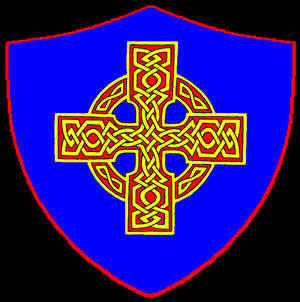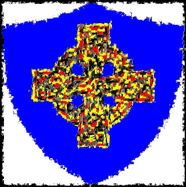
The Official Flag of the Birean Empire
Birea is a large, economically powerful nation whose territory encompases the entirety of the East Indies islands. It had its start as the key colony in the Scottish Empire before gaining its independence in 1953. The Bireans gained notoreity by becoming the de facto base of Nathanism immediately following independence.
In 1974, Emperor Marcus MacDowell instituted the "one-child policy" forbidding families from having more than one baby, in response to rapid population growth following independence. Because of a society that favours men over women, the results of this policy has led to an extreme imbalance of men and women in the population, so much so that as many as 100 million eligible Birean men will be unable to find a wife. Calls have been made to end the policy, especially from abroad, with rumours floating that Bireans may be engaging in human trafficking just to gain wives for their men.
At A Glance[]
Nation Name: The People's Theocratic Empire of Birea
Demonym: Birean
Capital: Helene
Independence: August 8, 1953: from Scotland.
Population: (see list of countries by GDP)
Official Language(s): Scottish English, Gaelic, Indonesian
Government Type: Constitutional Monarchy
Head of State: Emperor James Carroll
Head of Government: Emperor James Carroll
Official Religion: Nathanite Catholicism
Largest Religion: Nathanite Catholicism
Economy Type: Mixed
Currency: Birean Pound (B£1=US$2)
Constitution: No
Summer Time: Yes
Calling Code: +59
Internet TLD: .bir
Maritime Boundary (nm): 24
Aircraft Code: BR
Military Strength: Fluctuates, but it stays mostly at 5% of the entire population
Military Capability Score (out of 100, rating by Worldwide Defence Trade Association (WDTA)): 95 (Strong)
Technological Innovation Score: Military (WDTA): 80/100 (Good), Scientific (University poll): 80/100 (Good), Other (University poll): 90/100 (Strong)
Economic Rating (by Standard & Poor): 95/100 (Strong) (See list of countries by GDP)
Economic Freedom Index (by Standard & Poor): 85/100 (mostly free- some government regulation, mostly in terms of anti-monpolism and providing some assistance to the poor)
Health Care Rating (by Doctors Without Borders): 70/100 (Average)
Health Care System: Two-tiered, with support only going to impoverished individuals who qualify.
Political Freedom Index (by Reporters Without Borders): 20/100 (Poor, due to a strict adherence to a socially conservative interpretation of Nathanite law, almost all aspects of Birean life is heavily regulated)
Drug Laws: All substances are banned, including coffee.
Gun Control: Only approved personnel (such as police or the military) are allowed by law to carry firearms, but in practice this is almost never enforced, allowing the public to buy and own arms at will.
Environmental Policy Rating (by Greenpeace): 65/100 (attention is paid to environmental concerns, but it can take a back seat from time to time)
The Parchment[]

The Parchment is a variation of the Birean flag that has become a national symbol, typically identified with its independence and its military. In the 1920s, when the Birean independence movement was in its nascent stages, the various different groups all drew their own prototype for the eventual national flag, with few gaining traction. In 1922, when Scottish Emperor James IX visited Birea, an apocryphal tale says he came across this variant of the flag, upon which he picked it up, crumpled it, and threw it in a wastebasket. Two years later, George McPhail reproduced this flag, asserting that he had seen James commit the deed and rescued the flag himself, trying valiantly to restore it without much luck. He showed it to a crowd of people in Helene on October 21, 1924, using it as an example of what the politicians in Edinburgh felt about the locals. Because of its appearance it became known as "The Parchment", and soon became the spark that tilted Birea heavily in favour of independence, convinced that Scotland could no longer be trusted as stewards of the country. Eventually, this flag evolved into the current Birean flag, with The Parchment remaining in use due to its sentimental value.
James, for his part, has denied that he was ever in possession of The Parchment, and a pristine version of The Parchment has yet to be found. However, analysis of the flag suggests that it was, indeed, created prior to James' visit in 1922, with residue suggesting that it was crumpled up and thrown in a wastebasket. Still, DNA analysis has been inconclusive about who threw out the flag, leaving many to question the authenticity of McPhail's tale.
See also[]
- Ingrid's Crusade, a failed attempt by Ingrid Fjallsdottir to create a feminist revolution aimed at gaining more rights for women in Birea.
- Juan Castro, the man whose activism was instrumental in defeating the Crusade.
- Saint Jasper, the patron saint of Birea who it is said inspired the creation of the Birean independence movement in the 1870s, although no contemporaneous account of Jasper is known.
- The Soldiers of the Lord, a state-sponsored paramilitary organization that promotes Nathanism. It has been labeled as a terrorist group by many different countries.
